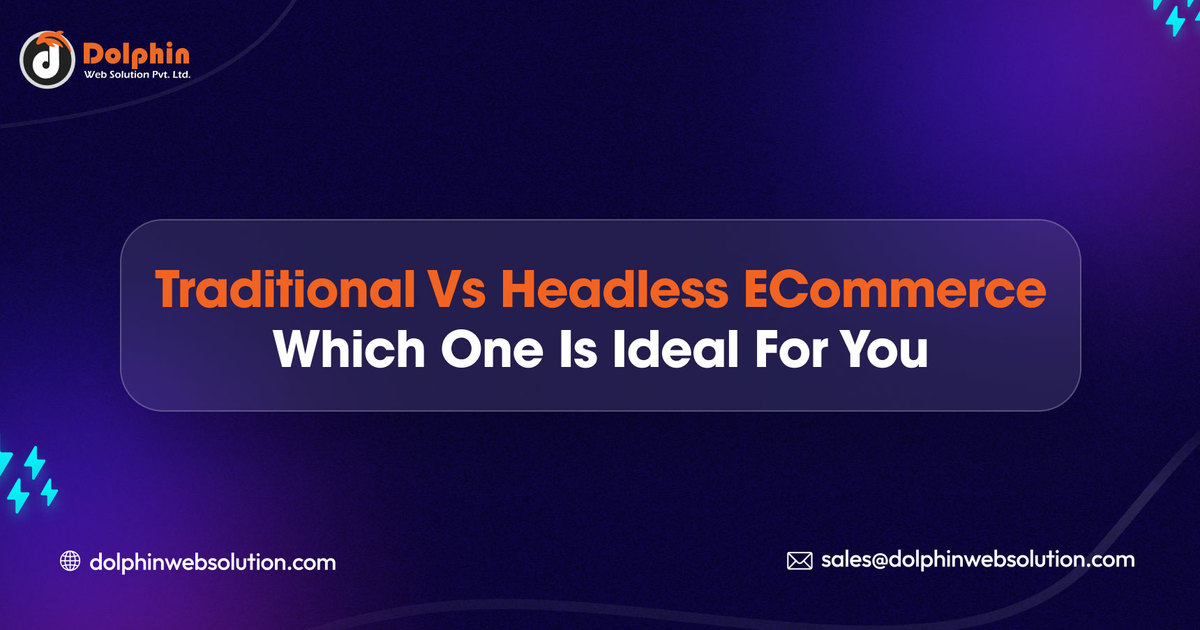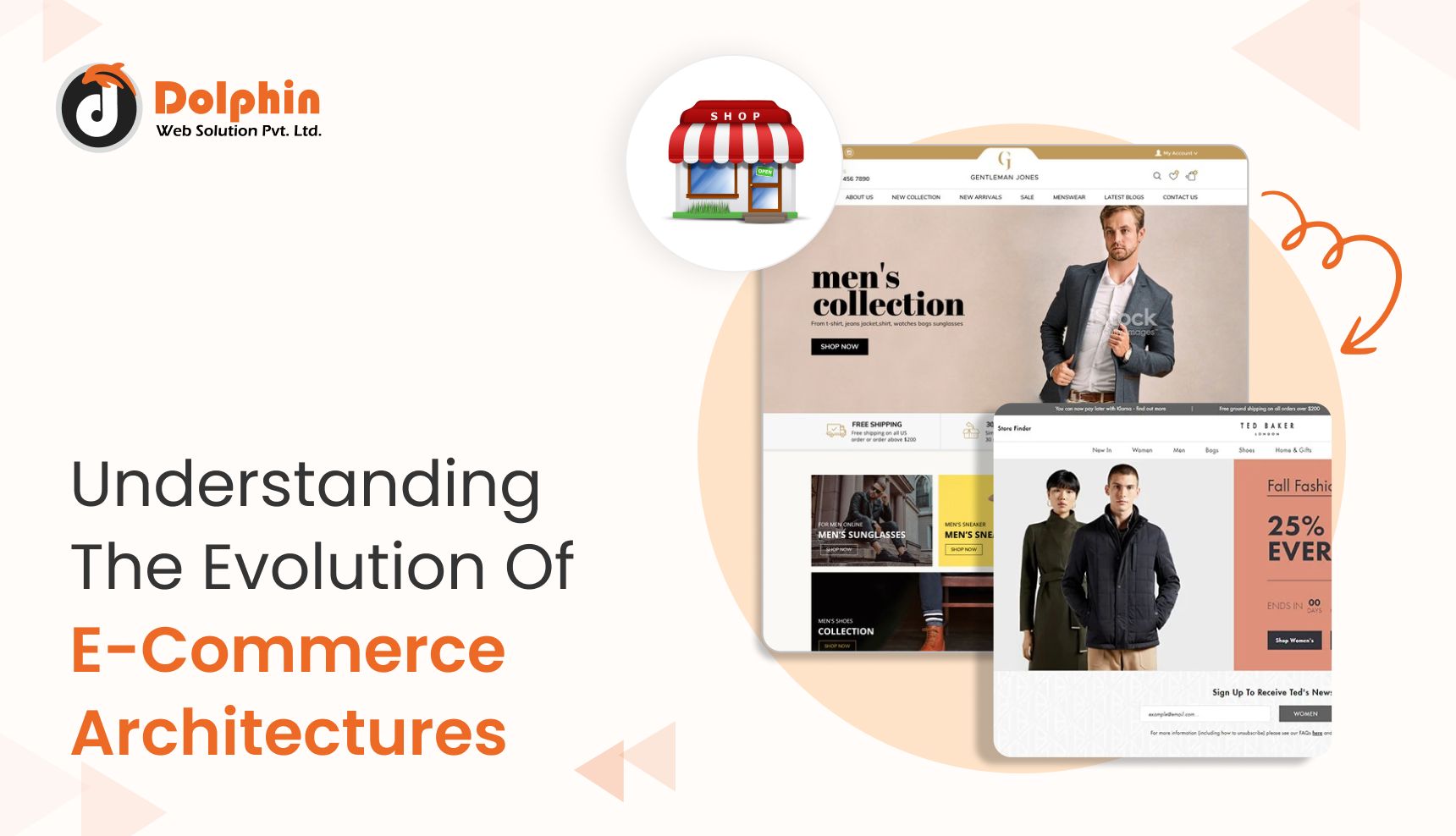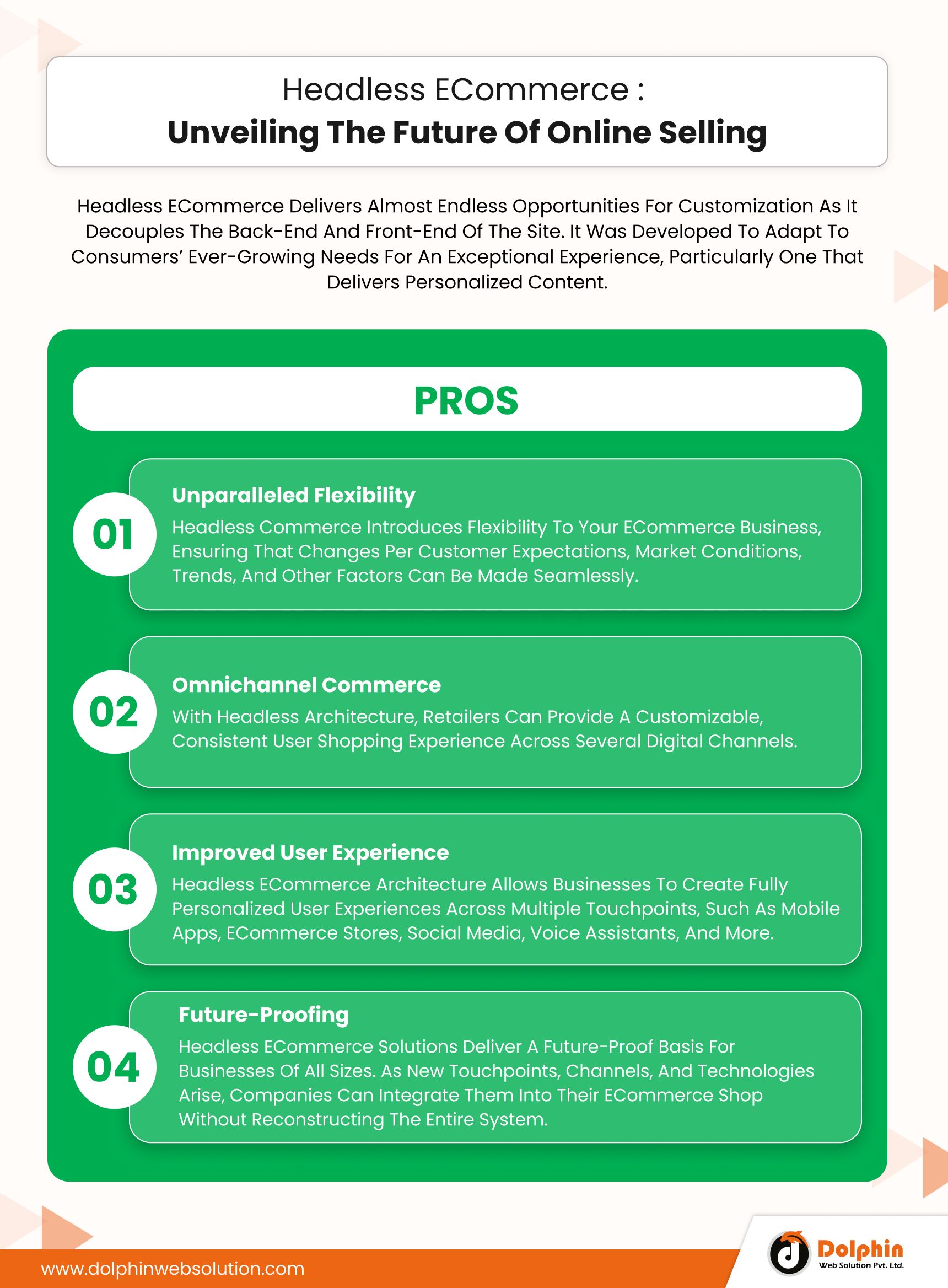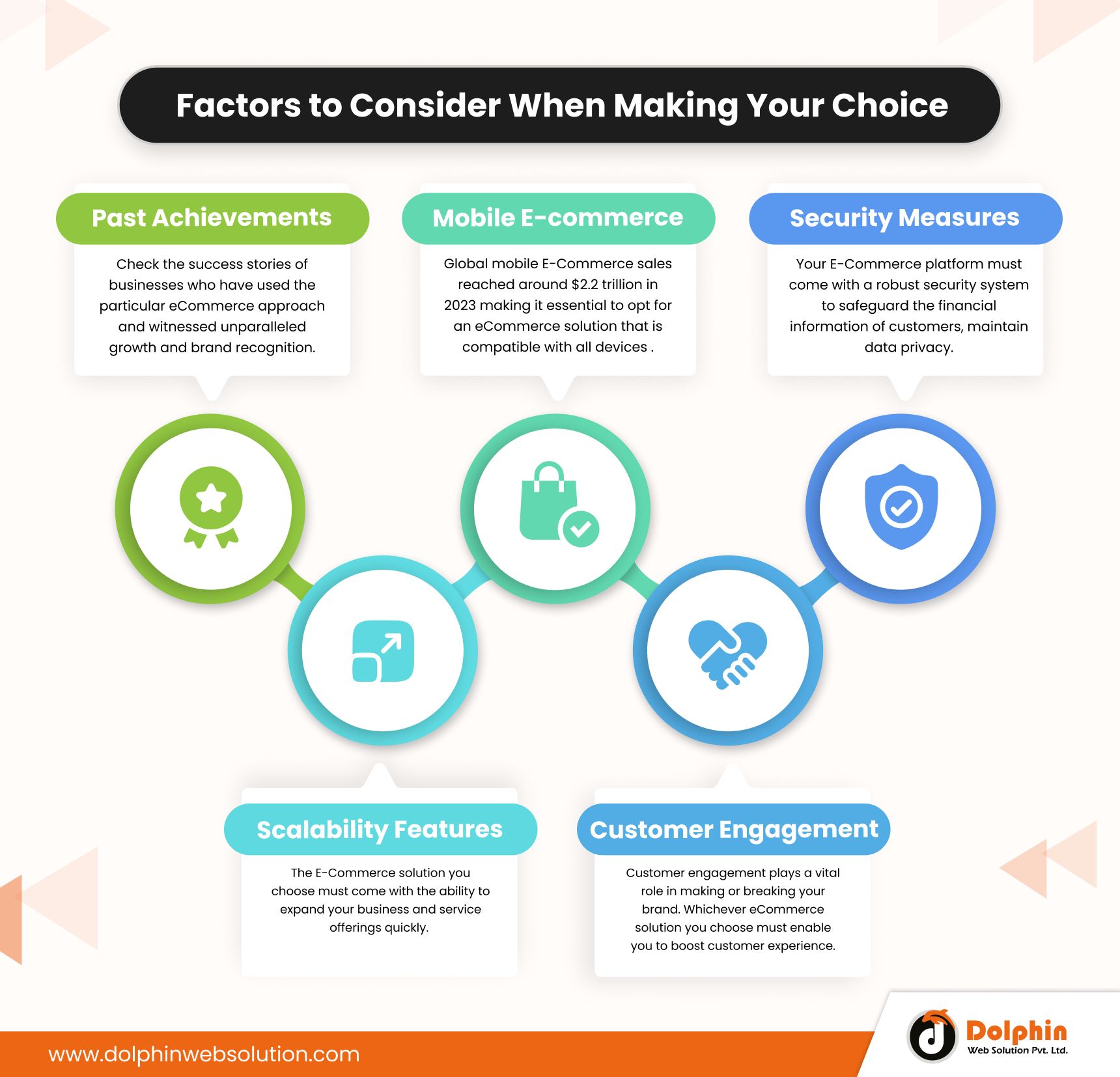Traditional vs Headless eCommerce: Which One is Ideal for You?

Table of Contents
- 1 Understanding the Evolution of eCommerce Architectures
- 2 Traditional eCommerce: Exploring The Conventional Approach
- 3 Headless eCommerce: Unveiling the Future of Online Selling
- 4 Critical Differences Between Headless And Traditional ECommerce
- 5 Factors to Consider When Making Your Choice
- 6 Conclusion
Summary :
The world is racing forward every day like a sports car. The eCommerce world is changing too — the competition is getting fiercer, the requirements of customers are upgrading, and technology is advancing. The eCommerce world has come a long way from the "right product at the right place" to excellent user experience.
Understanding the Evolution of eCommerce Architectures

For a long time, the eCommerce sector was purely based on the traditional approach where all the functionality was in one codebase. With front-end and back-end codes in one codebase, it was difficult to change the code as it could lead to unexpected consequences. The line between front-end and back-end developers becomes blurry, requiring more teamwork and experienced platform developers.
Then layered architecture came into existence to improve reusability and efficiency. Automatic layers were created for data, presentation, integration, and functionalities. However, the tight integration between all the layers caused the developers to test a particular component’s dependencies before changing it. To do away with these issues, composable architecture was developed, offering high customization levels, flexibility, and scalability to modern digital vendors.
The headless eCommerce architecture decouples the eCommerce architecture’s front-end presentation layer from the back-end transaction layer and data. The headless approach leverages API-driven microservices to allow developers to effectively scale your digital commerce system across all channels.
If you are considering hiring an eCommerce website development company, you must first understand the importance of selecting the right eCommerce approach for your brand. If you want a flexible eCommerce store, traditional eCommerce architecture may not be ideal for you as it can lock you into the preexisting development environment of your vendor and make upgrades expensive. You must consider what features and functionalities your eCommerce store needs to choose the ideal approach.
Headless eCommerce can be a good option if you want more personalization, flexibility, a unified shopping experience, scalability, and omnichannel order fulfillment. Whereas, if you are starting and want to create a digital storefront from scratch quickly, traditional eCommerce is ideal for you. Even if you are unaware of the best web design practices, traditional eCommerce will assist you in launching your storefront.
Both the traditional eCommerce and headless eCommerce come with their pros and cons. However, with constant technological development and higher expectations of customers, headless eCommerce may become the future of online selling.
Traditional eCommerce: Exploring The Conventional Approach
A traditional eCommerce is an all-in-one system that integrates numerous eCommerce features under one hood. Earlier, monolith (traditional) architecture used to be the only option for eCommerce businesses. However, as the eCommerce market thrived and customers started to expect smooth and unique digital experiences, issues with legacy traditional approaches began to emerge.
Simple Deployment
Traditional architecture is not as complex as composable technology. The self-contained nature of a Traditional architecture makes it easier for businesses to deploy, maintain, and manage than a composable solution.
Uncomplicated Testing and Debugging
With composable architecture, you must test all parts of the eCommerce applications individually, from the software architecture to components like data access, dependencies, caching, and more. Then, you must test whether all these disparate components fit together correctly. It’s time-consuming and expensive.
In the traditional approach, the application is fitted in a single unit, allowing you to do everything quickly from a central logging system.
Easy to Develop
Traditional architecture is ideal if you want to develop an entire eCommerce application and market quickly.
It’s easy for a small business owner or a small team of developers to rapidly build an executable app using a traditional system. This makes traditional architecture ideal for startups as they don’t have ample software development budgets.
Cons:
1) Customization options are limited and generally time-consuming and expensive to add.
2) You can’t quickly adopt all the latest software integrations the top tech companies released.
3) While personalization has become essential to make your consumers feel more connected to your brand, traditional eCommerce fails to do so. You can’t bring in personalization, which will cut off your chance to ensure a rich user experience and cater to the needs of your consumers better.
4) The site may fail to fully optimize for all devices or display accurately on various devices.
Headless eCommerce: Unveiling the Future of Online Selling

Headless eCommerce delivers almost endless opportunities for customization as it decouples the back-end and front-end of the site. It was developed to adapt to consumers’ ever-growing needs for an exceptional experience, particularly one that delivers personalized content.
Updates to the eCommerce site code are dispatched through API (application programming interface) rather than affecting the front end. This means that eCommerce developers can concentrate on the site’s front-end modifications without breaking the entire website’s function and logic layers.
This is a more time-consuming eCommerce approach than conventional eCommerce. Still, when coupled with a top eCommerce CMS, it enables developers to set up a digital storefront that looks and functions exactly how businesses want it.
Pros:
Unparallxeled Flexibility
Headless commerce introduces flexibility to your eCommerce business, ensuring that changes per customer expectations, market conditions, trends, and other factors can be made seamlessly. With the back-end and front-end being decoupled, it creates room for instant upgrades and rapid experimentation. Flexibility is a crucial concern for most businesses as surviving in the fast-paced digital world requires quickly adapting to changes.
Omnichannel Commerce
With headless architecture, retailers can provide a customizable, consistent user shopping experience across several digital channels. The front-end decoupling feature of headless architecture allows you to integrate it with several digital shopping touchpoints and emerging technologies, including mobile apps, social media platforms, smart devices, eCommerce sites, IoT devices, virtual reality (VR), and augmented reality (AR).
Improved User Experience
Headless eCommerce architecture allows businesses to create fully personalized user experiences across multiple touchpoints, such as mobile apps, eCommerce stores, social media, voice assistants, and more. This will ensure that the needs of your consumers are catered to and that you can deliver intuitive and immersive experiences to your customers.
Future-proofing
Headless eCommerce solutions deliver a future-proof basis for businesses of all sizes. As new touchpoints, channels, and technologies arise, companies can integrate them into their eCommerce shop without reconstructing the entire system.
High performance and scalability benefits: The optimizable back-end systems of headless eCommerce platforms facilitate high-volume transactions, while the customizable front-end ensures responsive and fast experiences.
Cons:
1) Initial cost can be too much for small businesses: A headless eCommerce architecture doesn’t arrive pre-built like a conventional one, so you need a developer to build it from scratch. This takes skill and time, making it a more costly upfront investment.
2) You likely need a robust developer to create the site: Once the headless infrastructure is in place, your team can manage and update it through a custom CMS, but leaving the initial site development to an expert is recommended.
Critical Differences Between Headless And Traditional ECommerce
Headless e-commerce does not restrict front-end developers
Headless e-commerce does not have a defined front-end which enables front-end developers to develop a completely unique and catered user experience that matches exactly what your business needs, without distressing about modifying the database. Whereas, traditional eCommerce approach has a fixed front-end process and design which limits developers and puts them at a risk while making changes. This happens because traditional eCommerce developers can not make even a small change without changing the entire front-end, code, and database.
Headless e-commerce enhances your time to value
Back-end functionality, capabilities and business logic make up around 85% of an e-shop’s software development procedure, irrespective of the eCommerce approach you choose. Headless eCommerce approach commences from the point of completion which boosts customer experience while reducing your effort, time, and cost. On the other hand, traditional eCommerce functions on a set of pre-established codes which makes it difficult to integrate to improve customer experience without costly and risky integrations.
Headless e-commerce comes with unlimited personalization and customization options
Traditional e-commerce platforms usually come with a predefined user experience for end users and administrative users as it lacks personalization and customization options. Headless e-commerce, on the other hand, enables e-commerce businesses to specify the exact experience they want to achieve using their e-shop for both administrative users and buyers.
Factors to Consider When Making Your Choice

The best way to choose the right e-commerce approach is to understand your business, your customer’s expectations, and the resources available:
Past Achievements
Check the success stories of businesses who have used the particular eCommerce approach and witnessed unparalleled growth and brand recognition.
Scalability features
The eCommerce solution you choose must come with the ability to expand your business and service offerings quickly.
Mobile eCommerce
Global mobile e-commerce sales reached around $2.2 trillion in 2023 making it essential to opt for an eCommerce solution that is compatible with all devices including smartphones, tablets, and computers.
Customer engagement
Customer engagement plays a vital role in making or breaking your brand. Whichever eCommerce solution you choose must enable you to boost customer experience and engagement to ensure customer retention, loyalty, and conversion.
Security Measures
Your eCommerce platform must come with a robust security system to safeguard the financial information of customers, maintain data privacy, and provide protection against malicious practices.
Conclusion
Over the past two years, about $2 billion in grants has been raised for headless architecture. Legacy platform developers are jumping on the headless eCommerce bandwagon, purchasing existing companies or investing in their headless eCommerce solutions.
That’s because headless eCommerce is “future-proof,” enabling retailers to be much more flexible, scalable, and proactive within a constantly evolving retail ecosystem.
Headless digital commerce architecture transcends the constraints of traditional monolithic eCommerce platforms, offering flexibility and enabling retailers to adopt new channels based on shifting consumer demand.
We can help you design the best site founded on headless architecture to ensure greater scalability, flexibility, and proactiveness for your e-shop. Contact us today to get a free quote


